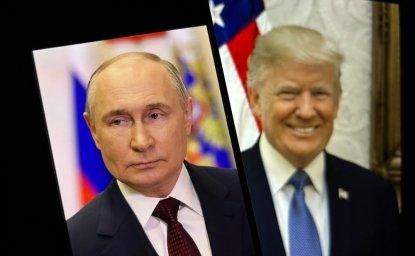Russian Civil Society: A Critical Assessment

"The past 15 years have shown that extreme evaluations or assumptions—whether they are optimistic or pessimistic about the fate of Russia's civil society—need to be supplanted by a more complex, nuanced understanding of the patterns of interaction in civil society," said Laura Henry, assistant professor of government and legal studies at Bowdoin College at a 23 May 2006 Kennan Institute talk. She, along with Alfred B. Evans, Jr., professor of political science at California State University, Fresno, and Lisa McIntosh Sundstrom, assistant professor of political science at the University of British Columbia discussed their recent edited volume, Russian Civil Society: A Critical Assessment. Their volume is intended to provide a detailed picture of Russian civil society, the conditions that facilitate and constrain it, and how it shapes and is shaped by the challenges of the post-Communist period.
Henry explained that the volume defines civil society as an intermediary space between the public and private spheres. She said that the chapters in the volume demonstrate a number of patterns within Russian civil society. Some of these patterns—citizen reluctance to participate in voluntary organizations, weak institutionalization, and the dominant role of the state—are legacies of the Soviet period, while others—the growing number of NGOs, the availability of foreign assistance, and dialogue with international actors—are developments of the post-Soviet period.
Henry also noted three important debates related to Russian civil society that appear in the volume: the viability of using the Soviet past to build a post-Soviet civil society, the positive and negative aspects of foreign funding, and the appropriate relationship between NGOs and the state.
Based on her own research on environmental organizations, Henry described three different types of organizations that have developed in post-Soviet Russia. The first type includes localized, grassroots organizations that are largely apolitical and focus on issues such as cleaning up parks and preserving local lakes and streams. Second are Western-style, professionalized NGOs that focus on transnational issues and have an adversarial relationship with the state. Third are the government-affiliated organizations, which are led by current and former officials and exist to support state initiatives.
Sundstrom argued that Russian NGOs tend to be most successful in achieving their aims when they cooperate with, rather than oppose, the state. She based her argument on a case study of soldiers' rights organizations. The most popular and most successful of these are the Committees of Soldiers' Mothers, which provide support for soldiers and their families and lobby the government on issues such as hazing in the military and alternative service options for conscientious objectors.
According to Sundstrom, advocating the rights of soldiers using the perspective of human rights has not been particularly effective in Russia. Instead, she contended, soldiers' rights groups "tend to succeed by initially making appeals on the basis of ... a universally shared norm, the norm against brutal treatment of innocent individuals—in this case, conscripts. Only later do they connect that norm with the language of human rights." The Soldiers' Mothers group has been most effective when it exposes instances of physical abuse of soldiers. Sundstrom noted that the Solders' Mothers have become increasingly involved in political activity over the past few years, and their relations with the state are becoming more adversarial. Although the group retains substantial popular support, it may face the threat of a government crackdown.
She argued that the 2005 law on NGOs is vaguely worded and makes it easy for the state to label an organization as "bad" and shut it down. "The vagueness of many parts of the NGO law leaves a great deal of latitude for it to be implemented inappropriately or abused in various ways," she said.
Evans argued that the Western concept of civil society as separate from the state clashes with Vladimir Putin's idea that civil society exists to support the state. According to Evans, Putin began to institutionalize his vision of civil society in 2004. One of the main components of Putin's plan was the creation of the Public Chamber, an advisory body composed of prominent activists appointed by the president, as well as representatives of national and local NGOs chosen by the presidential appointees. There were a wide variety of predictions as to what the Public Chamber would become, but Evans contended that those who predicted that it would be completely subservient to the government were mistaken. Even before the Chamber officially convened, members spoke out against the 2005 NGO law.
Today, the Chamber remains quite active on a wide range of issues and has in some instances been quite critical of the actions of government agencies. Nevertheless, Evans warned, the Putin administration intends to create a sharp dividing line between officially acceptable and unacceptable NGOs, with the state directing resources to the acceptable organizations and closing, intimidating, or marginalizing those that it sees as acting to the detriment of national interests. "Some organizations may start to rein themselves in as a matter of prudence," he said.
Author

Kennan Institute
After more than 50 years as a vital part of the Wilson Center legacy, the Kennan Institute has become an independent think tank. You can find the current website for the Kennan Institute at kennaninstitute.org. Please look for future announcements about partnership activities between the Wilson Center and the Kennan Institute at Wilson Center Press Room. The Kennan Institute is the premier US center for advanced research on Eurasia and the oldest and largest regional program at the Woodrow Wilson International Center for Scholars. The Kennan Institute is committed to improving American understanding of Russia, Ukraine, Central Asia, the South Caucasus, and the surrounding region through research and exchange. Read more

Explore More
Browse Insights & Analysis
The OSCE is a Good Value for America

Infographic | Russia's Illegal Annexation of Crimea

Russia’s Indigenous Communities and the War in Ukraine
